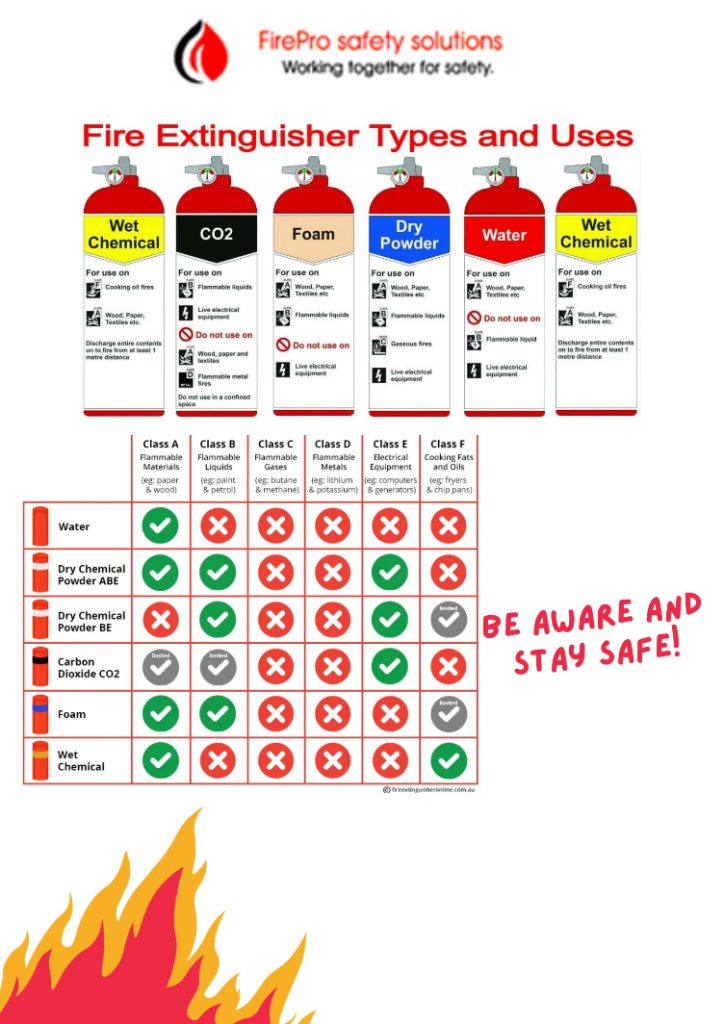Exploring Different Types of Fire Extinguishers and Their Uses

Fire safety is a paramount concern in any environment, be it a home, workplace, or public space. Having the right tools and knowledge to combat fires is essential for protecting lives and property. Fire extinguishers are one of the most crucial firefighting tools available. They come in various types, each designed to combat specific types of fires. In this article, we will explore the different types of fire extinguishers and their uses.
- Water-Based Fire Extinguishers (Class A)
Water-based fire extinguishers are designed for Class A fires, which involve ordinary combustibles such as wood, paper, cloth, and plastics. They work by cooling the fire and removing the heat element. However, they should not be used on electrical fires or flammable liquid fires, as they can be ineffective and potentially dangerous.
- Foam Fire Extinguishers (Class A and B)
Foam fire extinguishers are versatile and can be used on both Class A and Class B fires. They work by smothering the fire and cutting off the oxygen supply. These extinguishers are effective against fires involving flammable liquids (Class B) and solid materials (Class A).
- Carbon Dioxide (CO2) Fire Extinguishers (Class B and C)
CO2 fire extinguishers are suitable for Class B and Class C fires. They work by displacing oxygen, suffocating the fire. CO2 extinguishers are ideal for electrical fires (Class C) and flammable liquid fires (Class B) because they leave no residue and do not cause damage to electrical equipment.
- Dry Powder Fire Extinguishers (Class A, B, and C)
Dry powder extinguishers are versatile and can be used on Class A, Class B, and Class C fires. They work by smothering the fire, interrupting the chemical reaction. However, they are not recommended for use in enclosed spaces, as the powder can obscure vision and make breathing difficult.
- Wet Chemical Fire Extinguishers (Class K)
Wet chemical fire extinguishers are specifically designed for Class K fires, which involve cooking oils and fats. These extinguishers work by cooling the fire and creating a barrier between the fuel and oxygen. They are commonly found in commercial kitchens to prevent kitchen fires from spreading.
- Clean Agent Fire Extinguishers (Class A, B, and C)
Clean agent fire extinguishers use gases like halon, carbon dioxide, or other non-conductive, non-corrosive agents to extinguish fires. They are suitable for Class A, Class B, and Class C fires. Clean agents are preferred in situations where sensitive equipment or electronics need protection, as they leave no residue.
- Class D Fire Extinguishers (Metal Fires)
Class D fire extinguishers are designed specifically for fires involving combustible metals, such as magnesium, sodium, and lithium. These fires require a specialized extinguishing agent, often in the form of dry powder, to starve the fire of oxygen.
Choosing the Right Fire Extinguisher
To choose the right fire extinguisher for a specific environment, it’s essential to consider the types of fire hazards present. An assessment of the potential fire risks will help determine the most appropriate extinguisher type.
Furthermore, it’s crucial to ensure that extinguishers are regularly inspected, well-maintained, and positioned in easily accessible locations. Training on the proper use of fire extinguishers is equally important for anyone who may need to respond to a fire emergency.
Fire extinguishers are essential tools for fire safety, but their effectiveness depends on using the right type for the specific fire hazard. Understanding the various types of fire extinguishers and their uses is key to protecting lives and property. Regular maintenance, proper placement, and training are equally important to ensure their effectiveness in case of a fire emergency. Remember, when it comes to fire safety, being prepared can make all the difference.
